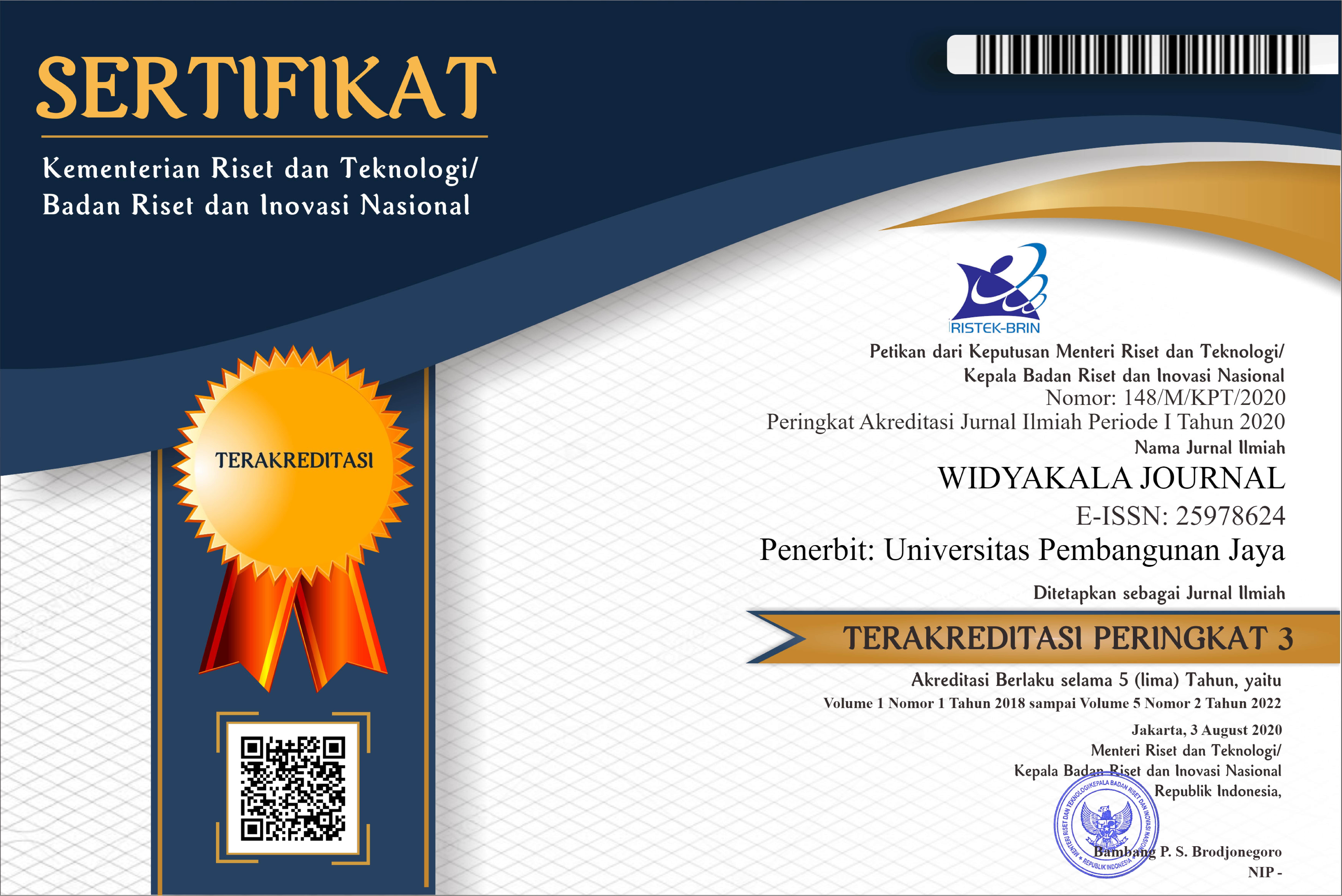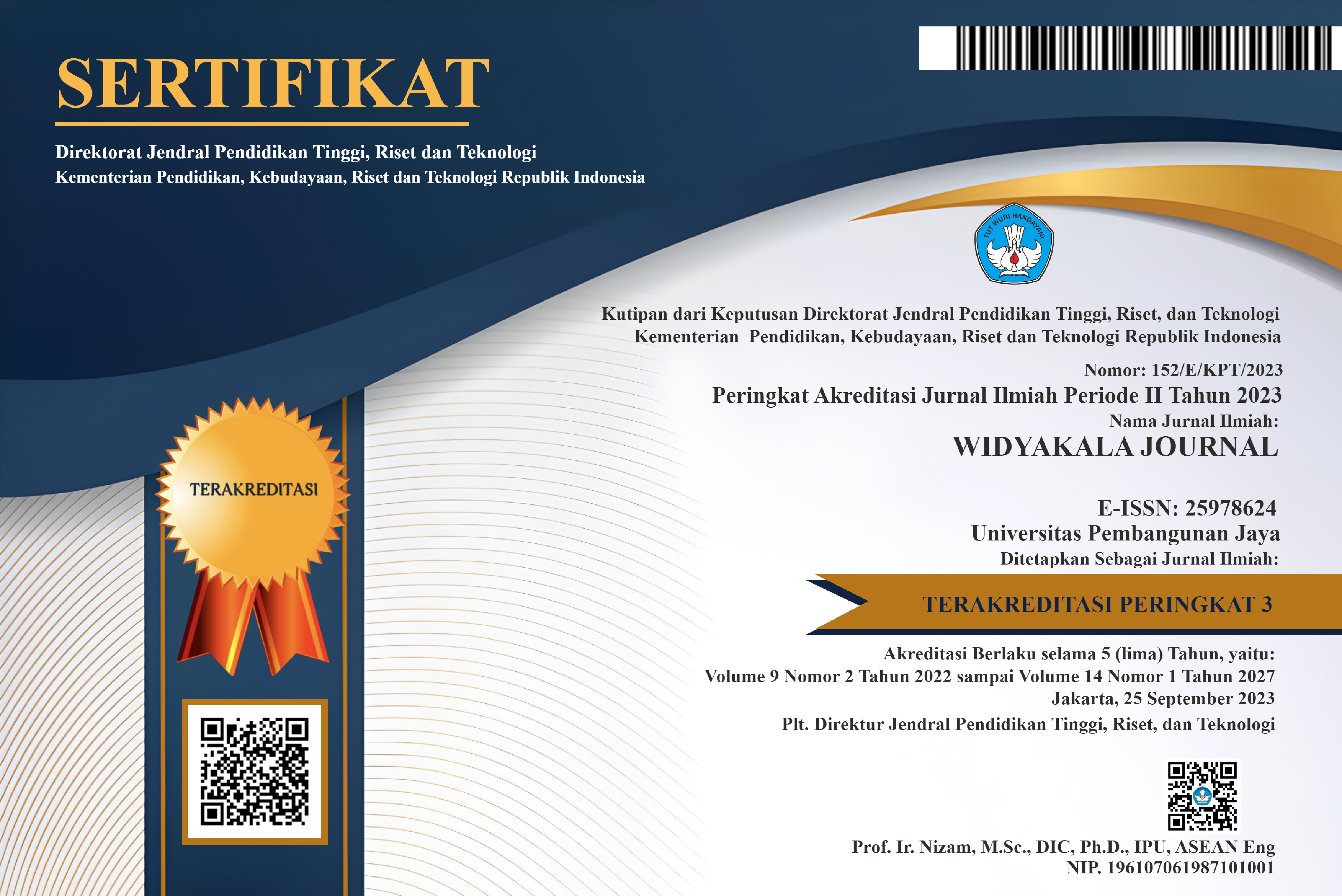Updated, March 2025
The Mediating Role of Trust in the Impact of Electronic Word of Mouth (E-WOM) and Sales Promotions on Purchase Decisions in Shopee E-Commerce among Urban Consumer
Abstract
Electronic Word of Mouth (eWOM) and sales promotion are critical factors influencing consumer behavior, particularly in the digital age. While previous studies have identified the impact of these factors on Trust, there is a need for a more comprehensive understanding of their roles in the consumer decision-making process. This study explores the relationships between Electronic Word of Mouth (EWOM), Sales Promotion, Trust, and Purchase Decisions in e-commerce. Utilizing structural equation modeling (SEM) with data from online consumers, the research demonstrates that EWOM and Sales Promotion significantly impact Trust, significantly influencing Purchase Decisions. The findings confirm that all constructs exhibit high reliability and validity. The study contributes to the existing literature by highlighting the mediating role of Trust between EWOM, Sales Promotion, and Purchase Decisions. From a policy perspective, ensuring transparency and authenticity in online reviews and sales promotions is crucial for maintaining consumer trust. E-commerce platforms like Shopee should enhance verification processes and leverage social media for effective promotional strategies. Businesses are advised to build Trust through high-quality products, excellent customer service, and transparent communication. This research reinforces the importance of EWOM and Sales Promotion in building consumer trust, which is essential for driving purchase decisions and achieving better market performance.
Keywords
Full Text:
PDFReferences
Akgunduz, Y., Nisari, M. A., & Sungur, S. (2023). A roadmap focused on customer citizenship behavior for fast-food restaurants during COVID-19. International Hospitality Review, ahead-of-p(ahead-of-print). https://doi.org/10.1108/IHR-01-2023-0006
Arief, M., Mustikowati, R. I., & Chrismardani, Y. (2023). Why customers buy an online product? The effects of advertising attractiveness, influencer marketing and online customer reviews. LBS Journal of Management & Research, 21(1), 81–99. https://doi.org/10.1108/LBSJMR-09-2022-0052
Attar, R. W., Shanmugam, M., & Hajli, N. (2021). Investigating the antecedents of e-commerce satisfaction in social commerce context. British Food Journal, 123(3), 849–868. https://doi.org/10.1108/BFJ-08-2020-0755
Chan, B., Purwanto, E., & Hendratono, T. (2020). Social Media Marketing, Perceived Service Quality, Consumer Trust and Online Purchase Intentions. Technology Reports of Kansai University, 62(10), 6265–6272.
Chetioui, Y., Lebdaoui, H., & Chetioui, H. (2021). Factors influencing consumer attitudes toward online shopping: the mediating effect of trust. EuroMed Journal of Business, 16(4), 544–563. https://doi.org/10.1108/EMJB-05-2020-0046
Choi, Y., & Jin, J. (2015). Is the web marketing mix sustainable in China? The mediation effect of dynamic trust. Sustainability (Switzerland), 7(10), 13610–13630. https://doi.org/10.3390/su71013610
Dapas, C. C., Sitorus, T., Purwanto, E., & Ihalauw, J. J. O. I. (2019). The effect of service quality and website quality of zalora.Com on purchase decision as mediated by purchase intention. Quality - Access to Success, 20(169), 87–92.
Dash, G., & Paul, J. (2021). CB-SEM vs PLS-SEM methods for research in social sciences and technology forecasting. Technological Forecasting and Social Change, 173(June), 121092. https://doi.org/10.1016/j.techfore.2021.121092
Dyer, J. H., & Chu, W. (2003). The Role of Trustworthiness in Reducing Transaction Costs and Improving Performance: Empirical Evidence from the United States, Japan, and Korea. Organization Science, 14(1), 57–68. http://www.jstor.org/stable/3086033
Farivar, S., Turel, O., & Yuan, Y. (2017). A trust-risk perspective on social commerce use: an examination of the biasing role of habit. Internet Research, 27(3), 586–607. https://doi.org/10.1108/IntR-06-2016-0175
Gharib, R. K., Garcia-Perez, A., Dibb, S., & Iskoujina, Z. (2020). Trust and reciprocity effect on electronic word-of-mouth in online review communities. Journal of Enterprise Information Management, 33(1), 120–138. https://doi.org/10.1108/JEIM-03-2019-0079
Giampietri, E., Verneau, F., Del Giudice, T., Carfora, V., & Finco, A. (2018). A Theory of Planned behaviour perspective for investigating the role of trust in consumer purchasing decision related to short food supply chains. Food Quality and Preference, 64(September), 160–166. https://doi.org/10.1016/j.foodqual.2017.09.012
Hair, J. F., Black, W. C., Babin, B. J., & Anderson, R. E. (2010). Multivariate Data Analysis (7th ed.). Pearson Education.
Hair, J. F., Ringle, C. M., & Sarstedt, M. (2011). PLS-SEM: Indeed a silver bullet. Journal of Marketing Theory and Practice, 19(2), 139–151.
Handi, H., Hendratono, T., Purwanto, E., & Ihalauw, J. J. O. I. (2018). The effect of E-WOM and perceived value on the purchase decision of foods by using the go-food application as mediated by trust. Quality Innovation Prosperity, 22(2), 112–127. https://doi.org/10.12776/qip.v22i2.1062
Henseler, J., Ringle, C. M., & Sinkovics, R. R. (2009). The use of partial least squares path modeling in international marketing. In R. R. Sinkovics & P. N. Ghauri (Eds.), New Challenges to International Marketing (Vol. 20, pp. 277–319). Emerald Group Publishing Limited. https://doi.org/10.1108/S1474-7979(2009)0000020014
Hu, X., Liu, S., Zhang, Y., Zhao, G., & Jiang, C. (2019). Identifying top persuaders in mixed trust networks for electronic marketing based on word-of-mouth. Knowledge-Based Systems, 182, 104803. https://doi.org/10.1016/j.knosys.2019.06.011
Kohler, E., Mogaji, E., & Erkan, İ. (2023). Save the Trip to the Store: Sustainable Shopping, Electronic Word of Mouth on Instagram and the Impact on Cosmetic Purchase Intentions [Ahórrate el viaje a la tienda: compras sostenibles, boca a boca electrónico en Instagram y su impacto en las intencione. Sustainability (Switzerland), 15(10). https://doi.org/10.3390/su15108036
Kwon, J. H., Jung, S. H., Choi, H. J., & Kim, J. (2020). Antecedent factors that affect restaurant brand trust and brand loyalty: focusing on US and Korean consumers. Journal of Product and Brand Management, 30(7), 990–1015. https://doi.org/10.1108/JPBM-02-2020-2763
Kwong, K. . (2013). Partial Least Squares Structural Equation Modeling (PLS-SEM) Techniques Using SmartPLS. Marketing Bulletin, 24(1), 1–32.
Langga, A., Kusumawati, A., & Alhabsji, T. (2021). Intensive distribution and sales promotion for improving customer-based brand equity (CBBE), re-purchase intention and word-of-mouth (WOM). Journal of Economic and Administrative Sciences, 37(4), 577–595. https://doi.org/10.1108/jeas-03-2019-0041
Lee, P. C., Liang, L. L., Huang, M. H., & Huang, C. Y. (2022). A comparative study of positive and negative electronic word-of-mouth on the SERVQUAL scale during the COVID-19 epidemic - taking a regional teaching hospital in Taiwan as an example. BMC Health Services Research, 22(1), 1–10. https://doi.org/10.1186/s12913-022-08930-2
Liu, S., Jiang, C., Lin, Z., Ding, Y., Duan, R., & Xu, Z. (2015). Identifying effective influencers based on trust for electronic word-of-mouth marketing: A domain-aware approach. Information Sciences, 306(February), 34–52. https://doi.org/10.1016/j.ins.2015.01.034
Liuspita, J., & Purwanto, E. (2019). The profitability determinants of food and beverages companies listed at the Indonesia stock exchange. International Journal of Scientific and Technology Research, 8(9).
Lu, C., Li, H., & Xu, T. (2020). Do profitability and authenticity co-exist? A model of sales promotion stereotype content and its perception differences among groups. Journal of Contemporary Marketing Science, 3(3), 333–363. https://doi.org/10.1108/jcmars-08-2020-0033
Mariani, M., & Baggio, R. (2020). The relevance of mixed methods for network analysis in tourism and hospitality research. International Journal of Contemporary Hospitality Management, 32(4), 1643–1673. https://doi.org/10.1108/IJCHM-04-2019-0378
Matute, J., Polo-Redondo, Y., & Utrillas, A. (2016). The influence of EWOM characteristics on online repurchase intention. Online Information Review, 40(7), 1090–1110. https://doi.org/10.1108/oir-11-2015-0373
Milliman, R. E., & Fugate, D. L. (1988). Using Trust-Transference As A Persuasion Technique: An Empirical Field Investigation. The Journal of Personal Selling and Sales Management, 8(2), 1–7. http://www.jstor.org/stable/20832449
Müller-Pérez, J., Acevedo-Duque, Á., Rettig, P. V., García-Salirrosas, E. E., Fernández-Mantilla, M. M., Izquierdo-Marín, S. S., & Álvarez-Becerra, R. (2023). Consumer Behavior after COVID-19: Interpersonal Influences, eWOM and Digital Lifestyles in More Diverse Youths. Sustainability (Switzerland), 15(8). https://doi.org/10.3390/su15086570
Pahlevi, R. (2022). Nilai Transaksi E-Commerce Indonesia Diperkirakan Capai US$137,5 Miliar pada 2025. Databoks.Katadata.Co.Id.
Pauwels-Delassus, V., & Mogos Descotes, R. (2013). Brand name change: Can trust and loyalty be transferred? Journal of Brand Management, 20(8), 656–669. https://doi.org/10.1057/bm.2013.7
Peter A. Voyer, C. R. (2018). The impact of word of mouth on service purchase decisions Examining risk and the interaction of tie strength and involvement Peter. The Eletronic Library, 34(1), 1–5.
Pourfakhimi, S., Duncan, T., & Coetzee, W. J. L. (2020). Electronic word of mouth in tourism and hospitality consumer behaviour: state of the art. Tourism Review, 75(4), 637–661. https://doi.org/10.1108/TR-01-2019-0019
Prasad, S., Garg, A., & Prasad, S. (2019). Purchase decision of generation Y in an online environment. Marketing Intelligence and Planning, 37(4), 372–385. https://doi.org/10.1108/MIP-02-2018-0070
Prasad, S., Gupta, I. C., & Totala, N. K. (2017). Social media usage, electronic word of mouth and purchase-decision involvement. In Asia-Pacific Journal of Business Administration (Vol. 9, Issue 2). https://doi.org/10.1108/APJBA-06-2016-0063
Purwanto, E. (2014). The Effect of Consumer Ethnocentrism on Perceived Domestic Product Quality and Purchase Intentions among Young Consumers in Jakarta, Indonesia. International Journal of Asian Social Science.
Purwanto, E., Deviny, J., & Mutahar, A. M. (2020). The Mediating Role of Trust in the Relationship between Corporate Image, Security, Word of Mouth and Loyalty in M-Banking Using among the Millennial Generation in Indonesia. Management and Marketing, 15(2), 255–274. https://doi.org/10.2478/mmcks-2020-0016
Purwanto, E., & Mutahar, A. M. (2020). Examine the Technology of Acceptance Model Among Mobile Banking Users in Indonesia. Technology Reports of Kansai University, 62(7), 3969–3979.
Purwanto, E., & Purwanto, A. D. B. (2020). An investigative study on sustainable competitive advantage of manufacture companies in Indonesia. Business: Theory and Practice, 21(2). https://doi.org/10.3846/btp.2020.12256
Qi, X., & Kuik, S. (2022). Effect of Word-of-Mouth Communication and Consumers’ Purchase Decisions for Remanufactured Products: An Exploratory Study. Sustainability (Switzerland), 14(10). https://doi.org/10.3390/su14105963
Rachmawati, E., Suliyanto, & Suroso, A. (2022). A moderating role of halal brand awareness to purchase decision making. Journal of Islamic Marketing, 13(2), 542–563. https://doi.org/10.1108/JIMA-05-2020-0145
Ratnasingam, P. (2003). Trust and Business-To-Business E-Commerce Communications and Performance. In Advances in Business Marketing and Purchasing (Vol. 12). https://doi.org/10.1016/S1069-0964(03)12006-6
Rehman, F. ur, Bin Md Yusoff, R., Bin Mohamed Zabri, S., & Binti Ismail, F. (2017). Determinants of personal factors in influencing the buying behavior of consumers in sales promotion: a case of fashion industry. Young Consumers, 18(4), 408–424. https://doi.org/10.1108/YC-06-2017-00705
Russell-Bennett, R., Rosenbaum, M. S., & McAndrew, R. (2020). Commentary: exposing a research bias or a relic of research practice. Journal of Services Marketing, 34(1), 24–29. https://doi.org/10.1108/JSM-11-2019-0439
Sekaran, U., & Bougie, R. (2016). Research Methods for Business : A Skill-Building Approach (Seventh (ed.)).
Tan, W. K., & Lee, B. Y. (2019). Investigation of electronic-word-of-mouth on online social networking sites written by authors with commercial interest. Online Information Review, 43(3), 462–480. https://doi.org/10.1108/OIR-09-2016-0254
Tang, Z., Chen, X., & Xiao, J. (2010). Using the classic grounded theory approach to understand consumer purchase decision in relation to the first customized products. Journal of Product and Brand Management, 19(3), 181–197. https://doi.org/10.1108/10610421011046166
Umair Akram, Hui, P., Khan, M. K., Tanveer, Y., Mehmood, K., & Ahmad, W. (2018). Asia Pacific Journal of Marketing and Logistics Article information. Https Pacific Journal of Marketing and Logistics, 30, 725–748.
VanDyke, M. S., Lee, N. M., Abitbol, A., & Rush, S. W. (2023). How message appeals and prior product use influence information processing, risk perceptions, trust, attitudes, and genetic test purchase intentions. PLoS ONE, 18(3 March), 1–20. https://doi.org/10.1371/journal.pone.0283102
Wang, N., Shen, X. L., & Sun, Y. (2013). Transition of electronic word-of-mouth services from web to mobile context: A trust transfer perspective. Decision Support Systems, 54(3), 1394–1403. https://doi.org/10.1016/j.dss.2012.12.015
Yang, X. (2022). Consumers’ purchase intentions in social commerce: the role of social psychological distance, perceived value, and perceived cognitive effort. Information Technology and People, 35(8), 330–348. https://doi.org/10.1108/ITP-02-2022-0091
Zhang, C. B., & Li, Y. (2019). How social media usage influences B2B customer loyalty: roles of trust and purchase risk. Journal of Business and Industrial Marketing, 34(7), 1420–1433. https://doi.org/10.1108/JBIM-07-2018-0211
Zhao, Y., Wang, L., Tang, H., & Zhang, Y. (2020). Electronic word-of-mouth and consumer purchase intentions in social e-commerce. Electronic Commerce Research and Applications, 41(February), 100980. https://doi.org/10.1016/j.elerap.2020.100980
Zhu, B., Kowatthanakul, S., & Satanasavapak, P. (2020). Generation Y consumer online repurchase intention in Bangkok: Based on Stimulus-Organism-Response (SOR) model. International Journal of Retail and Distribution Management, 48(1), 53–69. https://doi.org/10.1108/IJRDM-04-2018-0071
DOI: https://doi.org/10.36262/widyakala.v11i2.1076
Refbacks
- There are currently no refbacks.
Copyright (c) 2024 WIDYAKALA JOURNAL : JOURNAL OF PEMBANGUNAN JAYA UNIVERSITY

This work is licensed under a Creative Commons Attribution-ShareAlike 4.0 International License.
Redaksi Jurnal Widyakala
Lembaga Penelitian dan Pengabdian Kepada Masyarakat (LP2M)
Universitas Pembangunan Jaya
Jalan Cendrawasih Raya Blok B7/P, Sawah Baru, Ciputat, 15413
Telp : 021-7455555 ext 1311
widyakala.journal@upj.ac.id


















